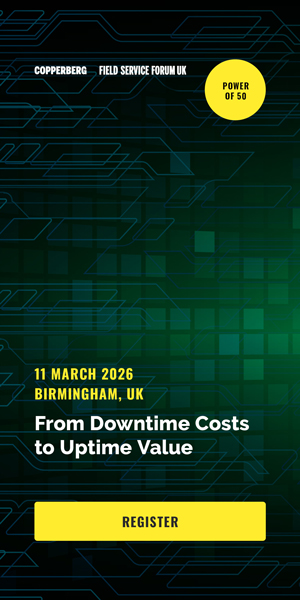You may or may not have spotted it but over the course of the year in my series of features for Field Service News I have been writing a series of articles that describe and outline a framework of the critical attributes and understanding required to deliver a successful Service Business.
Why? Most managers find it hard to know where to start, because service transformation involves every single aspect of a business.
In other words it’s a complex process, with many possible pathways to being able to deliver sustainable growth. So we created the service business model to provide managers with a holistic view of how to break the business challenges into smaller bite size chunks which they can action.
I wanted to illustrate these chunks through real case studies that I have experienced. This final article pulls it all together into a coherent story.
The 50,000ft Birds-Eye perspective
In our 1st article en-titled ‘Where to Start’ we described four key elements companies should understand in order to develop a service business.
- VALUE: Do you know the value you can create for your customer, and what your own organisations strategy is for turning it into profit?
- GO-TO MARKET: Can you innovate, design, develop, market and sell service propositions?
- SERVICE DELIVERY: Can you deliver services consistently, profitably and to the level of customer experience you intended?
- PLAN: Do you have a detailed explicit plan to drive change that is supported by your leadership and your people?
This is a good start, but how do you get into the detail? We went on to describe nine best practices case studies that provide some insights into how to achieve the balancing act required to develop a profitable service business.
1. Know your CUSTOMER’S JOURNEY(s)
We reviewed how Husky, a leading manufacturer of capital equipment mapped out their customer journey through the product lifecycle to understand the specific ‘moments of sales’ when the customer was open to the services being proposed.
This insight is often the 1st step to truly understanding how your customer’s business operates, and where you can make a difference. Many companies have an intuitive feel for their customer. Many more would do well to bring some analysis to their ‘gut feeling’, to uncover the attractive target segments and quantify the value add of all the stakeholders in the value chain.
2. Define your strategy for CORPORATE VALUE MANAGEMENT
In ‘Ouch! Getting the profit/cost centre call wrong’ we highlighted the importance of understanding your own companies objectives. What is your business model to make money?
How does your strategy translate into organisational design? What are the systems and processes you need to manage value? It is not only about the numbers, but your culture and also your capabilities. [/quote] How does your strategy translate into organisational design? What are the systems and processes you need to manage value? It is not only about the numbers, but your culture and also your capabilities. In particular the ability to manage knowledge.
We illustrated this through looking at how different companies have tackled the question of service being a separate P&L and when this has successfully brought focus to their service transformation.
The point is ‘Know Yourself!’. This is the key to discovering how you will reach your goals.
3. CUSTOMER PERCEPTION OF VALUE
In our 3rd article, ‘Finding nuggets of customer gold’, we discussed that there is no point understanding the customer journey and your own business strategy if you can not define the value you can deliver to your customer’s business. This is probably the most basic building block for developing the service value proposition.
Through the case study of Yokogawa, we saw how good insight into this value does not always come through the sales team. Indeed using a number of different methodologies can lead to surprising results. In this example they found customers wanted much closer technical relationships to boost the OEE of their plant. On the face of it, this simple insight was the enabler to really innovate for customer value.
4. PROPOSITION DEVELOPMENT AND DEPLOYMENT
‘Services that speak to their customers’ moved us away from VALUE and onto the GOTO MARKET strategy. We discussed how leading companies nearly always have a formal stage-gate type process to design and deploy services.
Discover for yourself, whether your corporate culture is more INSIDE-OUT and product orientated, or more OUTSIDE-IN and focused on customer value.[/quote] But that services are different from products, in that the use of prototyping and agile design techniques is more prevalent, because the upfront investment is not so large. We looked at Yokogawa as an example of how by looking at your websites language you can discover for yourself, whether your corporate culture is more INSIDE-OUT and product orientated, or more OUTSIDE-IN and focused on customer value.
Studies such as Noventum’s ‘Drivers of Growth’ earlier this year show that the more driven a company is in seeking inputs from it’s customer’s, the more likely it is to achieve higher growth rates of 10% or more.
5. SERVICE SALES MODEL
The second important component of a GOTO MARKET strategy is the Service Sales model. Here we are using Sales in the broadest sense of the word, including not only the front line sales team, but also the sales support teams, all customer touching employees and marketing. They all contribute to selling service!
So in ‘Service Sales; How difficult can it be?’, we heard the experiences of a leading equipment manufacturer in the Packaging Industry, as they ramped up their Service Sales. The key lessons from the Head of Bobst’s Service Business Unit were:
- Time: spend time with Product Sales explaining the contribution of services to their success.
- Focus, Focus, Focus: through dedicated Service Sales and Marketing teams
- Communicate, Communicate, Communicate: it’s a major cultural change
- Patience: it takes time and commitment to develop the relationships in order to get results
An important message that becomes clear, is that there is no one Service Sales Model that guarantees success. It very much depends on the context of your industry, people and markets.
6. SERVICE DELIVERY MODEL
Having a clear view of VALUE and a GO-TO MARKET strategy is not enough to create a sustainable business. In our 6th article ‘Don’t Lose your Service Shirts’ we began to explore SERVICE DELIVERY, often so critical to delivering profitability. First we looked at the five core components of the Service Delivery mode:
- End to End business processes
- Service management practices
- People competencies
- Performance management systems (KPI’s)
- IT Functional requirements and Master-data management
We described how Bobst were able to standardise seven different brands and sets of service processes into one global ’Book of Standard’s’ in only three months.
Their vision was to build a Standardised Back-Office, which could be customised for the different needs of their global customer base. This was achieved using a methodology that broke their business down into small standard, best practice components, and then rebuilt the processes with these standard components.
A bit like lego bricks. This methodology, which is used by leading technical service businesses such as Xerox and Siemens, allow the business to deeply understand & define the business needs. This is vitally important before deploying new technologies that automate the processes, bring transparency to data and help companies manage their knowledge.
7. PEOPLE MANAGEMENT
Successful service delivery is all about the your people. So in our 7th article ‘Why Dutch firm Hutten are happy to stand out from the Crowd’, we looked at a very innovative approach based on happiness.
They undertook a programme to promote the values of happiness, collaboration, transparency and sustainability across their organization, suppliers and stakeholders. The result was significantly improved productivity. An unusual approach , but it underlines the importance of people and communication in any business.
8. CUSTOMER EXPERIENCE
The final aspect of Service Delivery is to ensure the customer experience is what we intended when we designed our services. Ten years ago, this was usually an intuitive process within the B2B world.
A good example being how our people look or how they answer the phone. As our economies have become more Knowledge & Experience centric, customer experience has become a critical outcome to be designed, managed and improved. In ‘Is your service organisation looking inside out or outside in’ we explored different methods for gaining insights into Customer Experience. We looked at how one Medical equipment manufacturer went further than their standard Net-Promoter-Score survey’s and undertook in-depth interviews at different customer touch points.
The results were very uncomfortable. The challenge for the company was to, take the observations at face value and action them. Not easy for an organisation, if you have an internally focused technology culture.[/quote] The results were very uncomfortable. The challenge for the company was to, take the observations at face value and action them. Not easy for an organisation, if you have an internally focused technology culture.
The awareness of customer experience as an important element of fulfilling the Brand promise has led to leading companies introducing more formal Service Design processes and developing Service Design professionals.
9. PLAN
In our final article, ‘The Winning Plan’, we see how leading researchers have proved what most managers already know. Without an explicit documented plan, that is fully committed to by the leadership and the people, all the efforts on ensuring VALUE, having a robust GOTO MARKET strategy and an excellent SERVICE DELIVERY operation will go to waste. What needs to be done simply will not happen.
So if you have not guessed it yet, the value of this type of Service Business Model is to help managers see where are the priorities. Transformation and change is complex and not everything is possible at once. So to be able to see the wood from the trees and navigate the way to the destination is critical to success.
This Service Business Model is explored in more depth during Noventum’s Service Executive Leadership Courses. For more information use this link to our website www.noventum.eu















